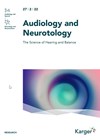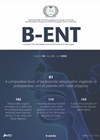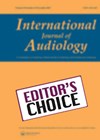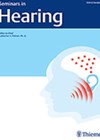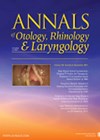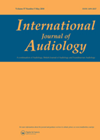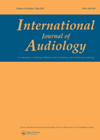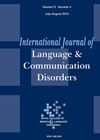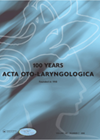
Journal Reviews
Softband vs. adhesive adapter in children with unilateral microtia and atresia
A bone conduction device is a well-established treatment indicated for patients with unilateral microtia and canal atresia. There are a variety of nonsurgical bone conduction hearing aids (BCHAs) with different coupling methods (softbands/adhesive adapter/spectacles). There appears to be uncertainty of...
Conductive hearing loss and temporal processing
This Turkish study looked at the effect of using hearing aids on auditory temporal processing (the ability of the hearing system to process the temporal properties of a sound stimulus in a certain period of time) in conductive hearing loss....
Ethnic inequalities in hearing aid use
Recent events, including the COVID-19 pandemic, have once again highlighted health inequalities experienced by people from ethnic minority backgrounds. Our Editors’ Choice paper shows that there are inequalities in hearing aid use and includes the stark finding that ethnicity is...
What is trendy?
This edition of Seminars in Hearing focused on the results from the MarkeTrak 2022. Now, the relevance to the UK market might be slight limited with some of the data but there are certainly a few interesting nuggets for our...
It is all so COSI…
Something which we have realised for a long time in the UK is the importance of the clinician in the assessment and long-term adoption of hearing aids. This common sense article outlines the need for more individualised patient pathways, thinking...
Can amplification preserve auditory function?
Hearing loss is a noted modifiable risk factor for dementia, and is also associated with depression, decreased quality of life and isolation. Hearing aids are the main intervention for presbycusis and a 2017 Cochrane Review showed that they have a...
Loneliness and hearing loss treatment
It is well-known that hearing loss can lead to social isolation and consequent loneliness. This study aimed to research whether hearing loss treatment helps in overcoming loneliness long-term. Two types of treatment - hearing aids (HA) and cochlear implants (CI)...
Self-report of hearing aids handling difficulties
The authors have raised an interesting subject concerning the ability of customers to self-assess their hearing aid handling skills. Previous studies showed that 96% of customers when asked if they are able to manage their hearing aids answered ‘yes’. However,...
Use of technological aids and interpretation services
Hearing loss attracts large interest among researchers all over the world due to its prevalence and negative psychological side-effects. Usually hearing loss is managed with hearing aids. However, there are several additional technologies that can be of great help for...
Supporting second language in bilingual children with cochlear implants
There have been mixed reports regarding the benefits of supporting two languages for bilingual children using cochlear implants. With an ever-increasing number of children with hearing loss undergoing cochlear implantation, this study provides timely clinical evidence. The authors studied the...
Which bone conduction implant (BCI) device to use?
Bone conduction implants (BCI) are alternatives when the use and benefit of conventional, prosthetic equipment is limited or contraindicated in patients who suffer from conductive, mixed and single-sided deafness. They are broadly divided into two main groups delivering vibration directly...
Open hearing-aid fittings or closed
There is always a balance between different types of hearing aids and their advantages and disadvantages that influence choice of device and ultimately user preference. Personal choice also plays a role when deciding on behind the ear or in ear...

